
地学前缘(英文版)(Geoscience Frontiers) 万方知网目次维普目次
- CSCD
- 科核
- 高T1
- 主管单位:
教育部
- 主办单位:
中国地质大学(北京)、北京大学
- 国际刊号:
1674-9871;EISSN1674-9871
- 国内刊号:
11-5920/P
- 学科分类:
- 字数:
4000-52000
- 有无基金:
/有基金 100.0%
- 周期:
CN外文-双月刊
- 特殊属性:
第一批认定学术期刊,外文期刊
- 电话:
010-82322283(202401期)
- 邮箱:
geofrontier@cugb.edu.cn(202401期)
- 复合因子:
1.291
- 综合因子:
0.897
- 收录:
万方,知网目次,维普目次
- 级别:
CSCD,科核,高T1
期刊简介
《地学前缘》期刊已被查看: 次
更新频次
单位占比
一作占比
/有基金-100.0%投稿指南
1、投稿方式:在线投稿。
2、刊内网址:(202401期)
http://www.geosciencefrontiers.com/
https://www.sciencedirect.com/science/journal/16749871
http://www.elsevier.com/locate/gsf
https://www.editorialmanager.com/gsf/(投稿系统)
自动跳转至:
https://www2.cloud.editorialmanager.com/gsf/default2.aspx
3、刊内邮箱:geofrontier@cugb.edu.cn(编辑部)
更多编辑邮箱请查看期刊刊内信息。
4、出刊日期:双月刊,逢单月出版。
2024年3月1日星期五
《地学前缘(英文版)》投稿指南
【2021年02期信息】
Guidelines for Authors
1 AIM AND SCOPE
GEOSCIENCE FRONTIERS (GSF) is a bi-monthly international journal that publishes in English high quality original research articles and timely reviews in interdisciplinary fields of Earth and Planetary Sciences. GSF aims to bridge innovative, provocative and challenging concepts and models related to various fields of research including petrology and geochemistry in understanding lithospheric architecture and mantle dynamics, global tectonics, economic geology and fuel exploration, geophysics, stratigraphy and paleontology with new insights on correlations and evolution, environmental and engineering geology, astrogeology, among other themes. The article categories in GSF include Focus papers of high profile overviews published together with author vitae and photographs, Research Papers, Letters, and Discussions. Selected colour figures of accepted papers will be printed free of cost in colour in the Journal. GSF also provides gratis reprints and complimentary journal copy. GSF is a unique open access publication that provides free full text download of all articles published in the journal through Elsevier's ScienceDirect platform without any page charges or subscription requirements.
2 MANUSCRIPT ORGANIZATION
Manuscripts should generally not exceed 10,000 words, excluding figures, tables and references. Title page: please provide the following information on the title page.
Title
The title should be concise and informative. Choose as few words as possible to describe the contents of the paper adequately.
Author names and affiliations
List the authors on the title page by full names whenever possible. Chinese contributors’ names should be written with authors’ given names first, followed by surnames; for example: Huilin Zheng. List authors’ affiliations and addresses below each name, including the full postal address and country name.
Corresponding Author
Please clearly indicate who will handle all stages of refereeing, publication, and post-publication, If that person is not the first author. Ensure that person’s telephone and fax numbers (with country and area code) are provided, in addition to e-mail and complete postal addresses.
Abstract (may be placed on a separate page following the title page)
Each manuscript must be accompanied by an informative abstract of no more than one paragraph and up to 350 words. The abstract should state briefly the nature of the study, its principal results and major conclusions. It should not state what the paper intends to do or what will be discussed.
Keywords
Please provide a maximum of 6 keywords, avoiding general and plural terms and multiple concepts (avoid, for example, "and", "of") immediately after the abstract. These keywords will be used for indexing purposes.
Introduction
This section should provide sufficient background information to allow readers to understand the context and significance of the problem.
Methods
The methodology employed in the work should be described in sufficient detail.
Results
The results section contains applications of the methodology described above and their earth science interpretation.
Discussion of the research in the context of similar or earlier studies Conclusions
This should explore the significance of the results of the work, not repeat them.
Acknowledgements
Place acknowledgments, including information on grants received, before the references in a separate section, and not as a footnote on the title page.
Reference list
The reference list is placed at the end of a manuscript, immediately following the acknowledgments and appendices (if any).
Figures and tables
Each figure and table must be called out (mentioned) sequentially in the text of the paper. Each figure must have a caption, and each table must have a heading.
3 MANUSCRIPT PREPARATION
Spacing and paragraphs
All parts of the manuscript must be double-spaced in 12-point type using Time New Roman. Each paragraph must be indented. The manuscript text file should not be in pdf format.
Page numbers
Page numbers must appear on all pages of text, including references and figure captions. Continuous line numbers should also be inserted from the first page onwards.
Headings
Text can use up to two heading categories in the format shown below.
Examples:
Triassic stratigraphy and depositional environments
Central and eastern Helan Mountains
Western Helan Mountain
Sediment composition and provenance
Figures and tables
In the manuscript, figures should not be embedded in the text. Figure files, sequentially numbered and referred to in the manuscript text, should be submitted separately in .jpg, .tif or .eps format. Figure captions should be listed at the end of the manuscript on a separate page before the first figure page.
Tables, including their headings, should not be included within the text but should be separately submitted. The manuscript text should carry a list of the table captions.
References
Please ensure that every reference cited in the text is also present in the reference list. Do not list references that are not cited in the text.
Reference Style: Citations in the text should be listed as follows:
1. Single author: the author’s name (without initials, unless there is ambiguity) and the year of publication;
2. Two authors: both authors’ names and the year of publication;
3. Three or more authors: first author’s name followed by “et al.” and the year of publication.
Citations may be made directly (or parenthetically). Groups of references should be first listed chronologically, then alphabetically.
Examples: “as demonstrated (Allan and Jones, 1995; Allan, 1996a, 1996b, 1999). Kramer et al. (2000) have recently shown ... ”
List: Please ensure that every reference cited in the text is also present in the reference list. Do not list references that are not cited in the text. References (single or multi-authored) should first be arranged alphabetically and then further sorted chronologically if necessary.
More than one reference from the same author(s) in the same year must be identified by the letters “a”, “b”, “c”, etc., placed after the year of publication. Note: All authors should be listed by name.
Examples:
Reference to a journal publication:
Iwamori, H., Zhao, D.P., 2000. Melting and seismic structure beneath the northeastern Japan arc. Geophysical Research Letters 27, 425–428.
Reference to a journal publication with an article number:
[2] J. van der Geer, J.A.J. Hanraads, R.A. Lupton, 2018. The art of writing a scientific article. Heliyon. 19, e00205. https://doi.org/10.1016/j.heliyon.2018.e00205.
Reference to a book:
Strunk Jr., W., White, E.B., 1979. The Elements of Style, third ed. Macmillan, New York, 384 pp.
Reference to a chapter in an edited book:
Mettam, G.R., Adams, L.B., 1999. How to prepare an electronic version of your article. In: Jones, B.S., Smith, R.Z. (Eds.), Introduction to the Electronic Age. E-Publishing Inc., New York, pp. 281–304.
Reference to a thesis or dissertation:
Amory, J.Y., 1996. Permian sedimentation and tectonics of southern Mongolia. M.S. thesis, Stanford University, 183 pp.
Reference to a paper in a conference proceeding:
Ishibuchi, H., Nozaki, K., Tanaka, H., 2001. Fuzzy data mining: effect of fuzzy discretization, in: Proc. 1st IEEE International Conference on Data Mining, San Jose, CA, 241–248.
Reference for a paper in press:
Kryszkiewicz M. Knowledge reduction in information systems. Acta Mathematica Scientia, in press.
Note: Internal reports (unpublished) and personal communications are not accepted in the reference list, but may be mentioned in the text, e.g., (G.M. Levy, 1984, Geonics Ltd. Tech., note TN-16) and (J. Smith, personal communication, 2006).
Reference to a website: Cancer Research UK, Cancer statistics reports for the UK. http://www.cancerresearchuk.org/aboutcancer/statistics/cancerstatsreport/, 2003 (accessed 13 March 2003).
Reference to a dataset: [dataset] M. Oguro, S. Imahiro, S. Saito, T. Nakashizuka, Mortality data for Japanese oak wilt disease and surrounding forest compositions, Mendeley Data, v1, 2015. https://doi.org/10.17632/xwj98nb39r.1.
Graphical abstract A Graphical abstract is required and should summarize the contents of the article in a concise, pictorial form designed to capture the attention of a wide readership online. Authors must provide images that clearly represent the work described in the article.
Graphical abstracts should be submitted as a separate file in the online submission system. Image size: Please provide an image with a minimum of 531 × 1328 pixels (h × w) or proportionally more. Preferred file types: TIFF, EPS, PDF or MS Office files. See http://www.elsevier.com/graphicalabstracts for examples.
4 PREPARATION OF ILLUSTRATIONS
All illustrations must be submitted in electronic format.
Size
Standard column sizes are 20 picas, or 3.33 inches, for one-column figures and 26 picas, or 4.33 inches, for one-and-one-third-column figures at required resolution.
Type
All graphic illustrations should use Arial or Helvetica fonts.
Resolution
All illustrations, graphics and photographs, must have a resolution of at least 300 dots per inch (dpi).
Color
Color figures are formatted using CMYK (cyan-magenta-yellow-black), not RGB (red-green-blue).
Page and color charges
If your manuscript is accepted for publication in GEOSCIENCE FRONTIERS, there will be no page charges, and selected colour figures will also be printed in colour free of charge. Authors are encouraged to submit attractive coloured versions of the figures accompanying their manuscripts.
Offprints
The corresponding author will be provided with a complimentary PDF file of the article via e-mail. The PDF file includes a cover sheet with the journal cover. After publication of your article, China University of Geosciences (Beijing) will also provide the corresponding authors with one paper copy of the journal as well as 30 free offprints. Additional offprints can be ordered by the authors through GSF editorial office (geofrontier@cugb.edu.cn).
General preparation tips
TIFF files are saved with LZW compression enabled.
Do not embed figures in documents. Do not submit figures in Microsoft Word or PowerPoint.
5 MANUSCRIPT SUBMISSION PROCEDURE
• All submissions should be made through the online manuscript submission system of Elsevier for Geoscience Frontiers by logging in as an author: at http://ees.elsevier.com/gsf. Submissions by e-mail attachment to the editorial office are not entertained.
• The article type should be selected from the pull down menu
• The title, abstract and key words should be copied and pasted in the appropriate columns
• The author list and contact details should be entered
• A list of at least four potential reviewers with names and e-mails should be submitted
• The following electronic files should be uploaded: (1) Cover letter, in Word file; (2) Research Highlights in Word file. Research Highlights are mandatory for this journal. They must comprise three short sentences, approximately 85 characters each sentence, and each sentence beginning with a bullet mark; (3) Graphical Abstract as a figure file in .tif, .eps or .jpg file. A Graphical Abstract is mandatory for this journal. It should be a fully colored and elegantly presented figure that would capture the attention of the reader. The Graphical Abstract can be a copy of a figure from the manuscript, or a mosaic of few panels arranged horizontally across in ‘landscape format’ with the horizontal axis of the figure about 3 times in length as compared to the vertical axis. There should be no figure caption, and the labeling inside the figures should be minimal and in large fonts. See http://www.elsevier.com/graphicalabstracts for examples; (4) Manuscript text file in Word with title, author names, abstract, key words, text, references, figure and table captions; (5) Figure files: each figure file must be numbered and uploaded separately. Figure files must be in .tif, .eps or .jpg format; (6) Table files: each table file should be numbered and uploaded separately. Table files should be in Excel format; (7) Appendix and lengthy data tables should be uploaded choosing file type as 'e-component' in the EES. These should be mentioned as Supplementary Data in the text. The captions of the Supplementary Tables should be listed under a separate section in the manuscript text, titled as "Supplementary Items".
• Once all the files are uploaded, build the pdf file through the EES, view the merged pdf file and approve it. Your manuscript will then be submitted to the Journal Office, and will be assigned to an Editor for review processing.
• All correspondence relating to manuscript submission and other queries should be addressed to the Editorial Office of GEOSCIENCE FRONTIERS at: geofrontier@cugb.edu.cn
Declaration of interest
All authors must disclose any financial and personal relationships with other people or organizations that could inappropriately influence (bias) their work. Examples of potential conflicts of interest include employment, consultancies, stock ownership, honoraria, paid expert testimony, patent applications/registrations, and grants or other funding. Authors should complete the declaration of interest statement using "https://www.elsevier.com/declaration-of-competing-interests" this template and upload to the submission system at the Attach/Upload Files step. If there are no interests to declare, please choose: 'Declarations of interest: none' in the template. This statement will be published within the article if accepted. "http://service.elsevier.com/app/answers/detail/a_id/286/supporthub/publishing" More information.
上一篇:全球能源互联网(英文版)(Global Energy Interconnection)下一篇:畜牧与生物技术杂志(英文版)(Journal of Animal Science and Biotechnology)
《地学前缘》同类天文地球科学期刊
-
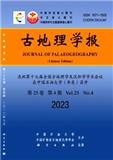
古地理学报
北核,CSCD,科核,武A,高T1
CN中文-双月刊影响因子2.974
-
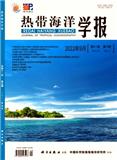
热带海洋学报
北核,CSCD,科核,高T2,武B+
CN中文-双月刊影响因子0.978
-
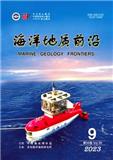
海洋地质前沿(原:海洋地质动态)
北核,CSCD,科核,高T2
CN中文-月刊影响因子1.113
-
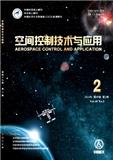
空间控制技术与应用
北核,CSCD,科核,武B+
CN中文-双月刊影响因子1.174
-
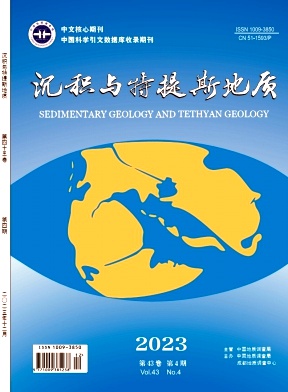
沉积与特提斯地质
北核,科核,CSCD扩,高T2,武B+
CN中文-季刊影响因子2.266
-
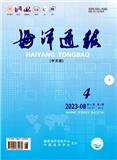
海洋通报
北核,CSCD,科核,高T2,武B+
CN中文-双月刊影响因子1.295
-
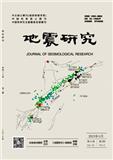
地震研究
北核,科核,CSCD扩,高T2,高T3,CACJ-核心
CN中文-季刊影响因子1.467
-
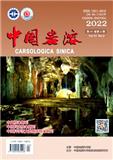
中国岩溶
北核,科核,CSCD扩,高T2,武B+
CN中文-双月刊影响因子1.833
常见问题
-
地学前缘杂志社官网、联系方式是什么?
地学前缘杂志社官网:http://www.geosciencefrontiers.com/
投稿网址:https://www2.cloud.editorialmanager.com/gsf/default2.aspx联系电话:010-82322283(202401期)
投稿邮箱:geofrontier@cugb.edu.cn(202401期) -
地学前缘杂志是核心期刊么?
地学前缘是核心期刊,级别是:CSCD,科核,高T1, 是:天文地球科学分类下的万方,知网目次,维普目次收录的期刊。
-
请问你们是地学前缘杂志社吗?
我们不是《地学前缘》杂志社。本站主要从事期刊信息展示与期刊推荐,不是任何杂志官网,直投稿件请联系杂志社。本站仅提供免费的学术指导、论文辅导、期刊投稿信息整理收集服务。
-
你们指导服务后可以保证文章被发表吗?
期刊发表的成功与否,主要取决于文章内容的质量。编辑老师会根据研究领域、创新性等多因素进行考量。我们会帮助您理解期刊的发表要求,助力提升发表几率,从而增加发表的机会。
-
晋级论文能否在报纸上发表?
在学术界,论文的发表往往被视为研究者职业发展的重要一环。晋级论文,即为了获得更高职称或学术地位而撰写的学术论文,通常需在专业期刊上发表。然而,许多人可能会问
